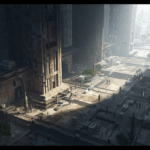Introduction
Ever notice how you feel more at ease when you’re around trees or greenery? There’s a reason for that. As cities expand, the importance of urban green spaces has become more than just a trendy talking point — it’s now a fundamental part of modern urban planning. From parks and rooftop gardens to vertical forests, green spaces are quietly transforming concrete jungles into more livable, breathable environments. Let’s explore why these pockets of nature matter — and how they’re changing the way we live in cities.
1. More Than Just Pretty Spaces
Sure, a tree-lined avenue or a flower-filled park looks beautiful, but the impact runs deeper. Green spaces help reduce city temperatures, improve air quality, and provide essential habitats for birds and pollinators. They’re also proven to reduce stress and boost mental health — something we all could use in our fast-paced urban lives.
2. Community Matters
Have you ever noticed how a park brings people together? Whether its kids playing, yoga groups gathering, or neighbors chatting, these spaces act as organic social hubs. In cities where isolation is common, green spaces can rekindle a sense of community.
3. Urban Farming and Food Security
Rooftop gardens and community farms are making waves — and not just in sustainability circles. They’re helping neighborhoods access fresh produce, teaching children about food sources, and encouraging a greener lifestyle, all within city limits.
Conclusion
Urban green spaces aren’t just a luxury — they’re becoming a necessity. As cities grow, we must grow smarter, making room for nature in even the smallest corners. Because a healthier city isn’t just about infrastructure; it’s about the people, the air, the connection, and the green in between.






